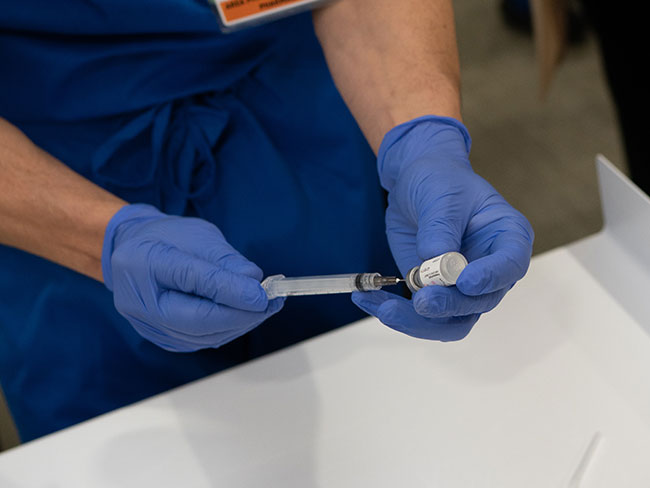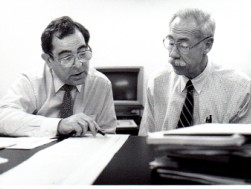Pharmaceutical marketing hurts patients’ care
At Kaiser Permanente, our physicians and pharmacists work together to ensure the drugs we prescribe are based on the evidence, not ads.
Pharmaceutical manufacturers spend an inordinate amount of money marketing their products to physicians and patients alike, and the tactics they use hinder patients from getting the drugs they need at prices they can afford.
Just as bad, aggressive pharmaceutical marketing contributes significantly to the overall high spending on prescription drugs in the United States. Reasonably well-insured patients and their physicians are not significantly affected by high drug costs and have little to no knowledge of a drug’s price. The result is overall drug spending that drains patient, government, and health system resources by more than $330 billion each year.
Pharmaceutical ads on television
While any television viewer under the age of 25 will find this incredible, it was only in 1997 that the Food and Drug Administration permitted drug companies to begin broadcast advertising of prescription drugs.
In the time since, drug ads have come to dominate American TV screens, and we have become inured to something very strange and almost unique to the United States — ubiquitous television ads for products that consumers can’t actually buy without a professional order. The point is to have patients put pressure on physicians to prescribe drugs, regardless of efficacy, price, or even safety. And it works — one survey found that 1 in 8 adults were prescribed a specific drug after seeing it in an advertisement and asking their doctor about it.
In 2016 alone, drug companies spent $6 billion — up from $1.3 billion in 1997 — marketing directly to consumers. That’s enough to pay for 4.6 million direct-to-consumer ads, including 632,000 television commercials. Seen a recent ad for Humira? That is not surprising given that last year, its manufacturer spent $19.6 million on television advertising.
Direct marketing isn’t the only way drug companies turn patients into their own sales forces. They also advertise to patients in more discrete ways, such as by offering discount cards and coupons, which can encourage the use of high-priced drugs and work around clinician and payer preferences for drugs of higher value and lower cost.
Marketing directly to consumers leads to an array of concerns, including overprescribing, increased demand for clinically inappropriate and expensive drugs, and higher spending that might not produce better health outcomes.
Drug detailing bolsters sales
Drug companies have also increased their marketing directly to physicians, a tactic known as detailing. In 2016, the pharmaceutical industry spent $5.6 billion on sales visits to physicians’ offices and $13.5 billion on free samples. Drug companies use these tactics to increase revenue by steering physicians and prescribers toward higher-priced drugs that might not be the best value for their patients.
The industry markets to physicians and other prescribers in more covert ways as well. Pharmaceutical companies often host promotional events and invite industry-paid speakers to promote their products. They also fund continuing medical education to promote their drugs; many physicians need this education to maintain their medical licenses.
Industry-funded education can lack a balanced view of conditions and their therapies, at times even exaggerating benefits and downplaying risks, and can undermine rational prescribing. A recent article by our partners at PharmedOut offers many examples.
A better approach: Prescribing based on evidence and value
Rather than relying on information from the pharmaceutical industry, Kaiser Permanente uses our own evidence-based materials and processes to educate our physicians and prescribers. We have a team of clinical pharmacist experts that does an independent review of all available materials, data, and evidence on a drug. Working closely with physician specialists, the team then uses this information to develop education materials for our physicians and prescribers.
Our own pharmacy education staff helps physicians stay current on state-of-the-art therapeutic options and the best and most-effective drugs. This includes providing unbiased evidence through various methods, including peer-to-peer education, direct in-person and virtual visits, and presentations to specialist groups. Our physicians can get even more evidence-based information to help their patients thanks to having instant access to our robust electronic health record system, which provides de-identified aggregate data on tens of millions of clinical outcomes.
In addition, physicians and other prescribers at Kaiser Permanente can easily consult with one another to discuss specific therapies and cases. Our evidence-based approach to prescribing ensures patients receive high-quality, high-value treatment.
Curbing the negative effects of pharmaceutical marketing
At Kaiser Permanente, our integrated care model empowers our physicians and pharmacy experts to work together and make decisions based on evidence and value. Yet, while we have found some solutions that work in our model, policymakers must do more to combat the negative effects of pharmaceutical marketing, including making sure consumers are better informed.
We’ve supported efforts, for example, to require advertisers to show the list price of drugs in their commercials and to require pharmaceutical representatives to be certified at the state level before being allowed to offer product consultations within the medical community.
We’ve also advocated for reforms that would require stronger evidence of a drug’s effectiveness for its continued FDA approval. Patients and their physicians should never be deprived of vital information that can improve outcomes and avoid adverse events and unnecessary costs.
Meanwhile, the Kaiser Permanente Institute for Health Policy has partnered with various experts and organizations to further study pharmaceutical marketing tactics and share more information about the impacts of pharmaceutical marketing directly with the public. For example, our partners at PharmedOut created this resource.
Patients deserve to have medications prescribed based on evidence, not splashy commercials. Physicians and other prescribers need access to the latest unbiased information and research about a drug’s effectiveness, not just free samples and hype.


























